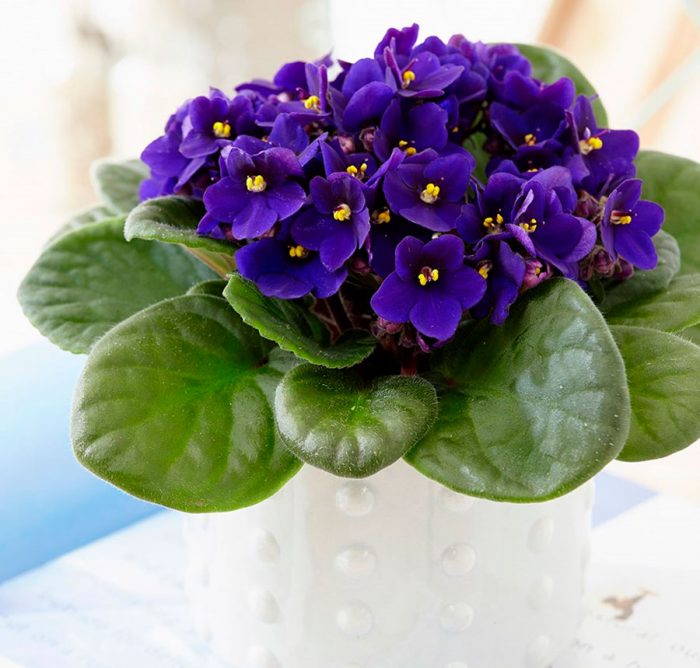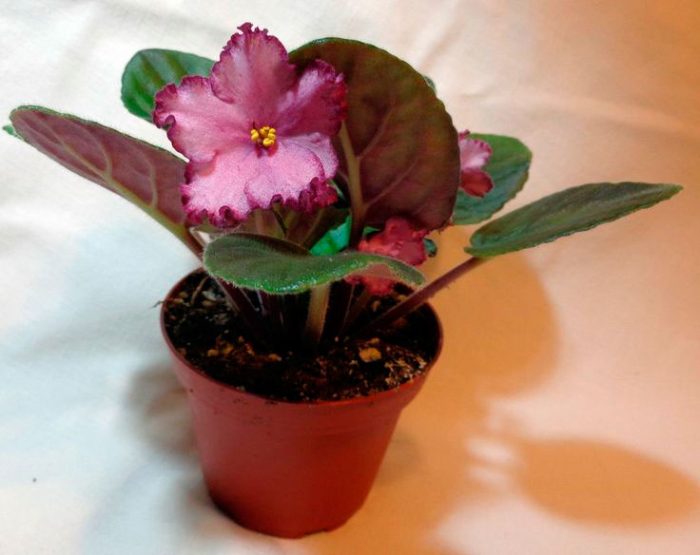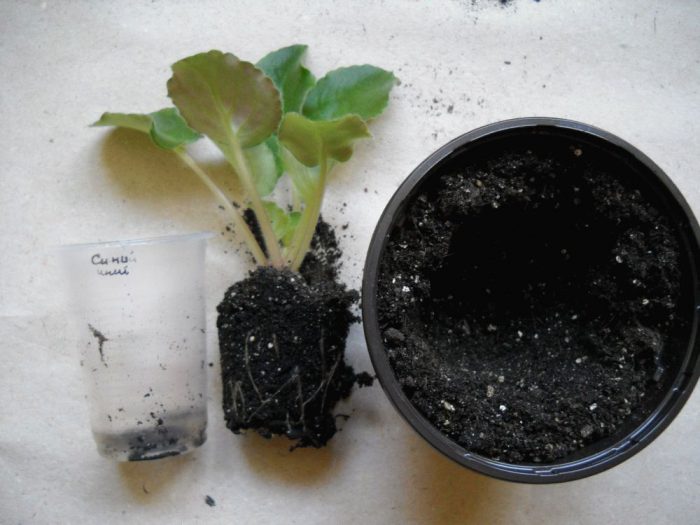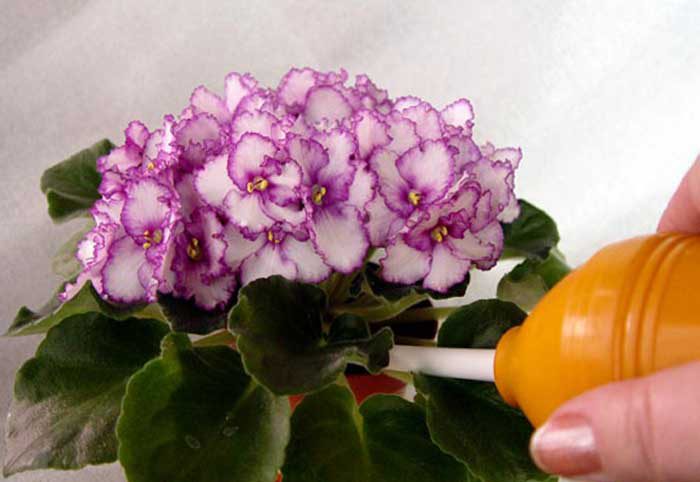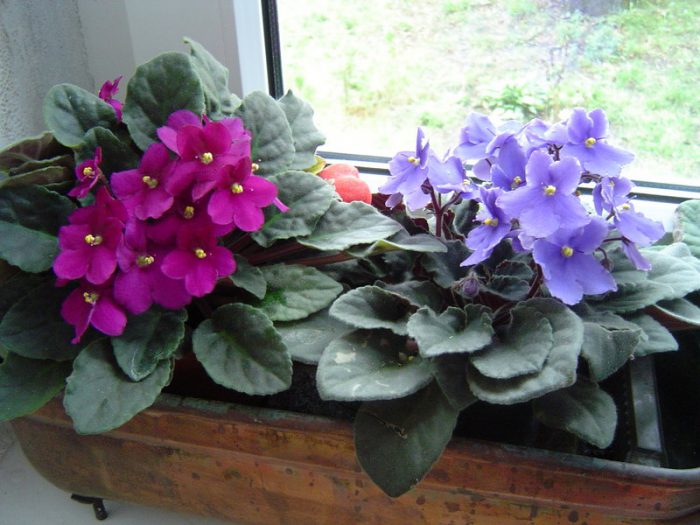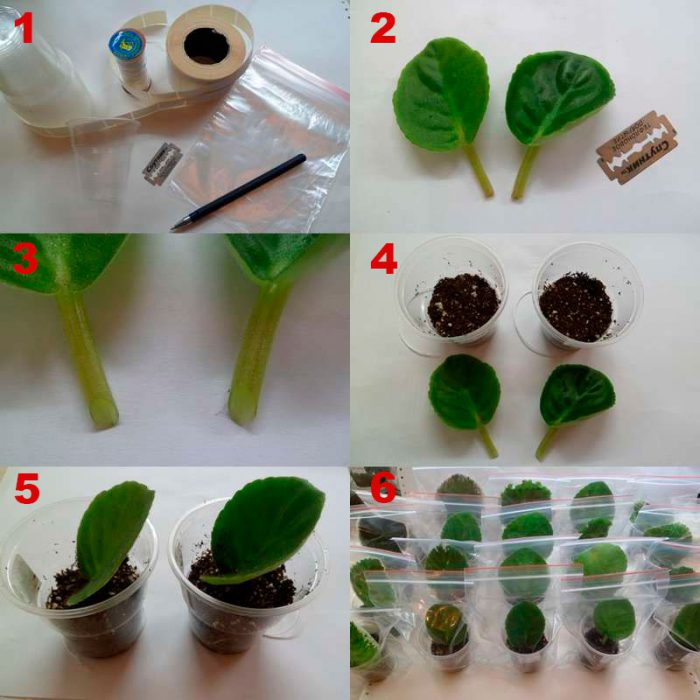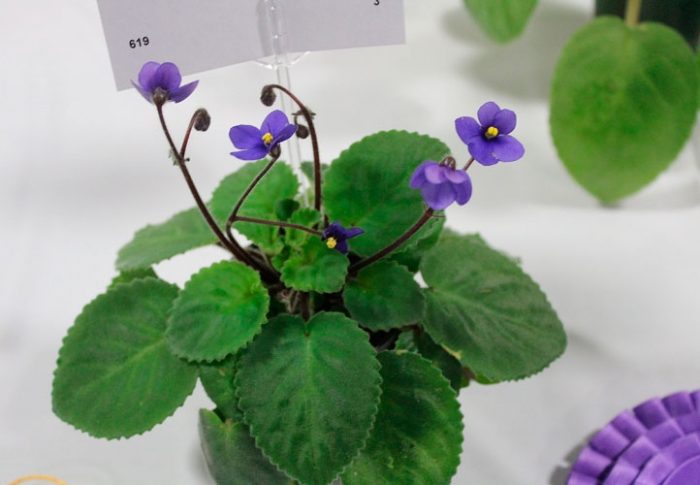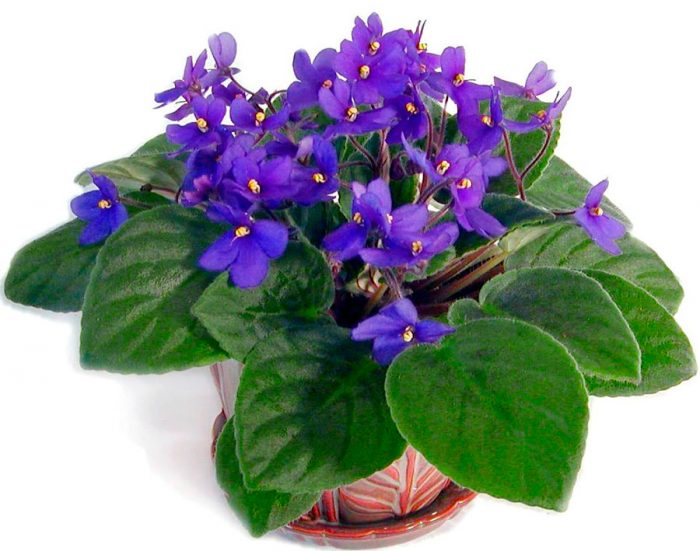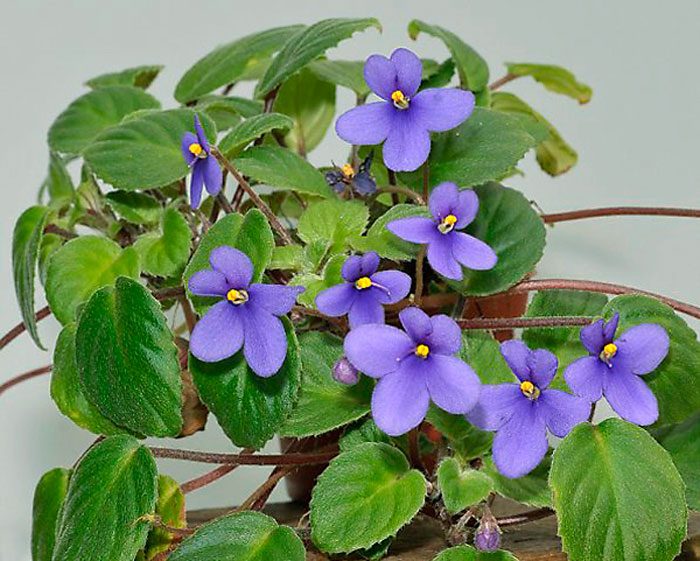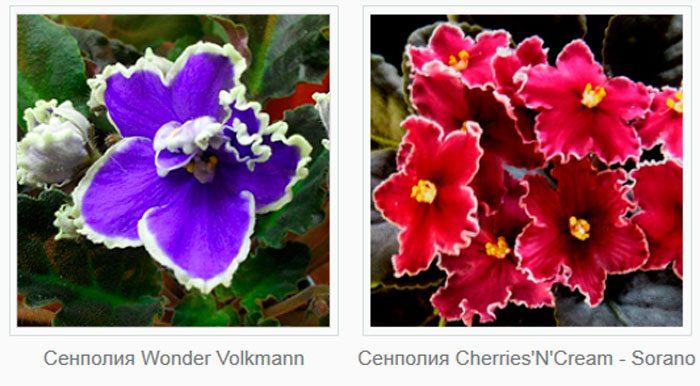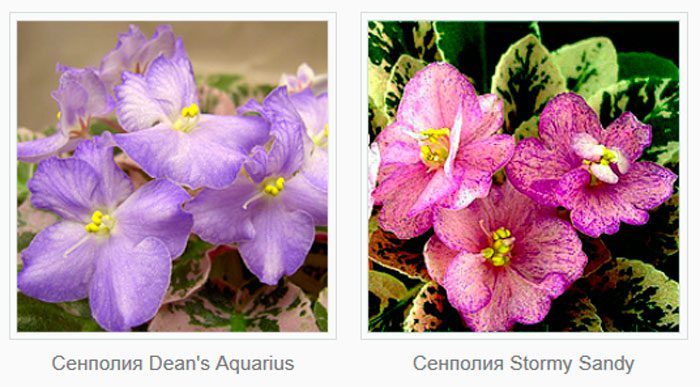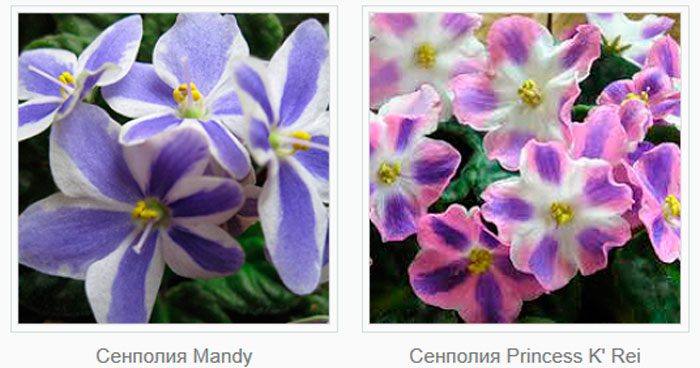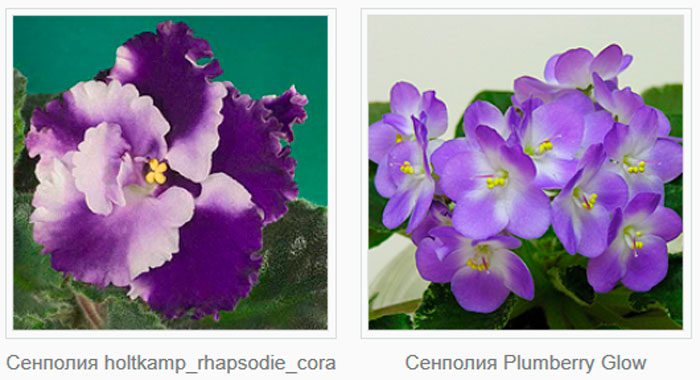In nature, this type of plant can be found near streams, as well as near the waterfalls of the African tropics. In 1892, Baron Walter von Saint-Paul first noticed the violet within the Usambara Mountains in Tanzania, after which he made a complete description of this flower. As a result, she received the name Saintpaulia in honor of the baron and, after a while, she was shown at the world flower exhibition, and she was able to attract the attention of flower growers.
Over the years, breeders of many countries have been engaged with her and, as a result, a huge variety of Saintpaulia species have been bred. The Uzambara violet will not leave anyone indifferent because of the wide variety of varieties, as well as the long flowering period.
Among other things, it is enough to just take care of Saintpaulia, but the violet will bloom throughout the year. At the same time, it takes up very little space and several different types of violets can be placed on the windowsill, and after rooting the cuttings, several plants can be grown that will have flowers of different shades.
Home care for Saintpaulia
Lighting
Saintpaulia prefers places where there is a lot of light, but where direct sunlight does not reach. West and east windows are ideal, but it is better to keep it on the south window in the winter. If the apartment has only southern windows, then measures should be taken to protect the plant from the scalding sun's rays. In such cases, you can use a side table to avoid holding the plant directly on the windowsill.
Temperature regime
A young plant develops well at a temperature of + 23 ° C-25 ° C, and for an adult plant this indicator can be reduced to + 20-24 ° C. The main thing is that the daytime and nighttime temperatures are practically at the same level, and their difference is within a few degrees. Large changes in temperature, as well as drafts, are very harmful to Saintpaulia.
Air humidity
Saintpaulia loves high air humidity, but at the same time feels good in dry air. It is not recommended to spray the violet, but to take other measures to increase the humidity is welcome.
Watering
For irrigation, settled tap water is suitable, but you can water both rain and melt water if there are no environmental problems. In any case, the water should settle.When watering, you need to control so that moisture does not get inside the outlet and on the leaves. In other words, watered at the root. If the weather is warm outside, then watering can be increased, if it is colder, then watering can be reduced. The best indicator of watering intensity can be its leaves. If the leaves are firm and fleshy, then the watering is within the normal range, and if the leaves began to fall down, and become lethargic to the touch, then the watering should be increased. When the earth is overdried, thin roots may die off, which actively absorb moisture. With waterlogged soil, rotting of the root system is possible. It often happens when a violet is planted in an oversized pot. To protect the plant from fungal diseases, about once a month the plant is watered with a weak solution of potassium permanganate.
Soil for Saintpaulia
Certain requirements are imposed on the soil for violets, related to the fact that the roots of the violet have good access to oxygen.
This means that it should be loose, while retaining moisture well. The composition of the planting mixture includes the following components: sod land, leaf humus, sand and sphagnum moss. Every amateur grower can have his own recipe and, of course, the best one.
Alternatively, you can purchase a ready-made planting mixture at a flower shop and add perlite, sphagnum moss or coconut substrate to it.
It is possible to use land from a coniferous forest, adding to it leafy land in a small amount.
Saintpaulia transplant
This is not a large plant, and therefore it is grown in small pots. In order for the violet to grow normally further, it should be transplanted into a larger pot. The violet also has delicate roots and, as a result, it is very difficult for it to tolerate transplants with a complete replacement of the soil. If the growth of the violet begins to slow down, it must be immediately transplanted into a larger pot. At the same time, the plant is simply rolled over into another dish, after which the required amount of soil is poured into the container.
An urgent plant transplant will be needed in cases where root rot has occurred or the dose of fertilizers is overdone.
Experts believe that for the best growth of Saintpaulia, the diameter of the pot must be three times smaller than the diameter of the rosette. Typically, violets are grown in pots with a diameter of 10-13cm and a height of 10cm. In pots of this size, the violet has the largest leaves and flowers. In larger pots, Saintpaulia may not bloom.
Top dressing
After transplanting, approximately in a month and a half, they begin to fertilize an adult plant. For this, fertilizers for flowering plants should be used, which can be purchased at flower shops. This operation should be done regularly, as violets can bloom throughout the year. Many lovers of violets do not fertilize them, but every six months they transplant them into new pots with a diameter slightly larger than the previous ones (somewhere by 1-2 cm).
Plant rejuvenation
After some time, the lower leaves of the violet begin to die off and then it loses its decorative effect, and its flowering becomes not so attractive. To rejuvenate the plant, the top is cut off, the cut sites are treated with a root growth stimulant, after which it is planted in a fresh substrate. The rest of the flower is left in the pot and after a while, in the pot, stepchildren will appear, ready for rooting.
Reproduction of violets
This plant reproduces in several ways: by rooting cuttings, stepchildren, peduncles. Cuttings are taken from the leaves, choosing healthy plants. You need to take a sharp knife or blade and cut the leaf sideways so that there is more area for rooting. The length of the cutting can be within 3-5cm. The place of the cut is sprinkled with activated carbon, and placed in a container with water. Before this, the water is boiled and cooled, and before installing the cutting, an activated carbon tablet is thrown into the water.After about a week and a half, roots appear at the cutting.
Subsequently, the cuttings are planted in plastic cups, in which holes are made in the bottom and foam is filled up (for drainage). About half the glass is filled with earth from coniferous trees or the usual substrate of turf and sand. Cuttings with overgrown roots are planted to a depth of about 1.5 cm, after which they are covered with a plastic bag. You can also cover with any transparent container.
Cuttings can be planted immediately in the ground and do not wait for the roots to appear in the water.


Some saintpaulia varieties have side shoots called stepchildren. In order for the plant to develop normally and have a decorative look, stepchildren are removed and rooted in the same way as cuttings.
Certain types of violets do not have stepchildren, but they can be obtained by removing the growth point. After a certain time, lateral shoots will appear in the axils of the developing leaves. When they reach a size of about 3 cm, they are cut off and planted in an earthen substrate.
Growing violets is one of the favorite activities of both amateur flower growers and ordinary housewives. Their uniqueness lies in the fact that they take up little space on the windowsills, which means that you can grow several species of this amazing plant at once. Moreover, they are unpretentious, and require very little time to leave. In addition, they are easy to reproduce and literally all lovers of beauty have mastered this technology. She is loved for the fact that she pleases others throughout the year, while you can see specimens with unique coloring. Several of them will fit on one windowsill, and this undoubtedly decorates the home. Moreover, they look great in hanging compositions, next to other types of the same beautiful flowers.
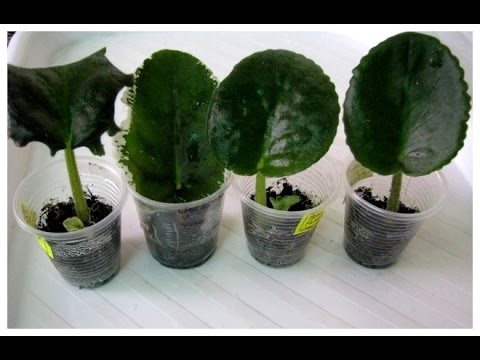

Watch this video on YouTube
Saintpaulia varieties with photos and names
Dark Saintpaulia (Saintpaulia confusa)
A plant with a slender, straight stem up to 10 cm high. The flowers are bluish-purple, with yellow anthers, collected in clusters of four.
Saintpaulia violet-flowered, or Saintpaulia violet-colored (Saintpaulia ionantha)
In nature, the plant has violet-blue flowers, while in cultivars bred, the color can be very diverse: white, pink, red, blue, purple. The leaves are green above, greenish-reddish below.
Saintpaulia magungensis
A plant with branched stems up to 15 cm high and leaves about 6 cm in diameter with wavy edges. The flowers are purple, collected in two or four.
Saintpaulia teitensis
A rare species from the highlands of southeastern Kenya, protected.


Watch this video on YouTube

